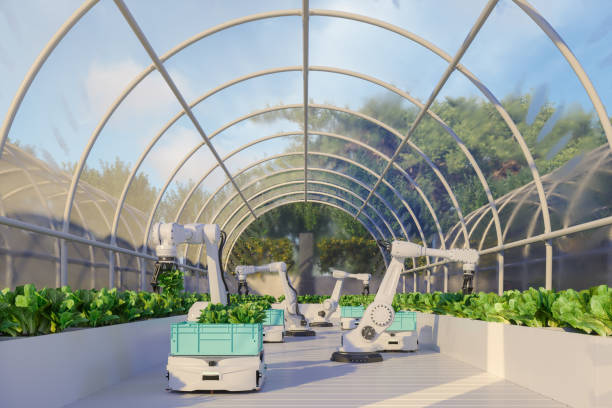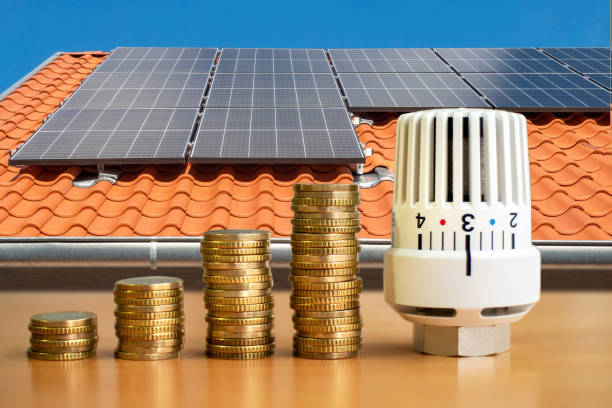Green Technology: Innovations for a Sustainable Future
With growing concerns about climate change and environmental degradation, there is a pressing need for sustainable solutions. Green technology, also known as clean technology or eco-technology, offers innovative approaches to address these challenges. In this article, we will explore the concept of green technology, its benefits, and various innovations that are shaping a sustainable future.
Table of Contents
Introduction
In recent years, the concept of green technology has gained significant attention worldwide. It refers to the development and application of products, services, and systems that use renewable materials and energy sources to minimize negative environmental impacts. Green technology aims to reduce greenhouse gas emissions, conserve resources, and promote a more sustainable way of living.
Understanding Green Technology
To truly comprehend the significance of green technology, it is essential to understand its core principles. Green technology encompasses a wide range of fields, including renewable energy, sustainable transportation, green building, waste management, water conservation, and smart grid systems. It involves the integration of science, technology, and innovation to create environmentally friendly alternatives to traditional practices.
Benefits of Green Technology
The adoption of green technology brings numerous benefits. Firstly, it helps in mitigating climate change by reducing carbon emissions. Renewable energy sources like solar and wind power provide clean and sustainable alternatives to fossil fuels. Secondly, green technology promotes resource efficiency and conservation, reducing the strain on natural resources such as water, forests, and minerals. Thirdly, it fosters economic growth by creating new job opportunities and driving innovation in various sectors.
Innovations in Renewable Energy

One of the most crucial aspects of green technology lies in the development of renewable energy sources. Solar energy, generated through photovoltaic cells, has seen significant advancements in efficiency and cost-effectiveness. Wind power, hydroelectricity, geothermal energy, and biomass are also gaining momentum as viable alternatives to traditional energy sources. These innovations in renewable energy play a vital role in reducing greenhouse gas emissions and dependence on fossil fuels.
Sustainable Transportation Solutions
Transportation is a significant contributor to carbon emissions and air pollution. Green technology offers sustainable transportation solutions to address these issues. Electric vehicles (EVs) have witnessed remarkable advancements, with improved battery technology and charging infrastructure. Additionally, public transportation systems powered by renewable energy sources, such as electric trains and buses, are becoming more prevalent. Furthermore, initiatives like bike-sharing programs and walkable cities promote eco-friendly commuting options.
Green Building and Architecture
Green building practices and sustainable architecture focus on constructing environmentally responsible structures. These buildings incorporate energy-efficient designs, utilize renewable materials, and implement advanced technologies to reduce energy consumption. Concepts like passive heating and cooling, green roofs, and efficient insulation contribute to minimizing the environmental impact of buildings. Green buildings not only reduce energy costs but also provide healthier and more comfortable living spaces.
Waste Management and Recycling

Efficient waste management and recycling are integral to a sustainable future. Green technology offers innovative solutions for waste reduction and recycling. Advanced waste treatment technologies, such as anaerobic digestion and waste-to-energy conversion, help convert waste into valuable resources while minimizing its environmental impact. Recycling programs encourage the reuse of materials and reduce the need for virgin resources, thus conserving energy and reducing landfill waste.
Water Conservation Technologies
Water scarcity is a significant global concern. Green technology plays a crucial role in water conservation. Innovations like low-flow faucets and showerheads, rainwater harvesting systems, and smart irrigation controllers promote efficient water usage. Additionally, water purification and desalination technologies offer solutions for accessing clean water in areas facing water shortages. These technologies contribute to sustainable water management and the preservation of this vital resource.
Smart Grid Systems
Smart grid systems integrate advanced technology with traditional power grids to optimize energy distribution and consumption. By utilizing real-time data, smart grids enable efficient energy management and reduce wastage. They facilitate the integration of renewable energy sources into the grid, enhance grid reliability, and empower consumers to actively participate in energy conservation. Smart grids are a critical component of a sustainable energy infrastructure.
Green IT and Digital Solutions
Green IT focuses on reducing the environmental impact of information technology systems. This includes energy-efficient data centers, virtualization, cloud computing, and recycling electronic waste. Digital solutions such as telecommuting, video conferencing, and e-commerce also contribute to reducing carbon emissions associated with traditional business practices. Green IT and digital innovations offer opportunities for sustainable growth while minimizing the ecological footprint of the IT industry.
Challenges and Limitations
While green technology offers promising solutions for a sustainable future, it faces several challenges and limitations. High initial costs and limited availability of some technologies hinder widespread adoption. Integration into existing infrastructure and regulatory frameworks can also pose challenges. Furthermore, technological advancements must be complemented by changes in behavior and consumer preferences to achieve long-term sustainability goals.
Future Prospects of Green Technology
The future of green technology looks promising as advancements continue to be made. Increased investments in research and development, coupled with supportive policies and incentives, can accelerate the adoption of green technologies worldwide. Collaboration between governments, businesses, and individuals is essential to drive innovation and create a sustainable future for generations to come.
Final Thoughts
Green technology plays a vital role in combating climate change, conserving resources, and creating a sustainable future. From renewable energy and sustainable transportation to green building and waste management, numerous innovations are shaping our path towards a greener and more eco-friendly world. Embracing green technology is not only an environmental responsibility but also a pathway to economic growth and improved quality of life.
FAQs
What is green technology?
Green technology refers to the development and application of environmentally friendly products, services, and systems that minimize negative environmental impacts and promote sustainability.
What are the benefits of green technology?
Green technology offers benefits such as mitigating climate change, conserving resources, promoting economic growth, and driving innovation in various sectors.
What are some examples of green technology?
Examples of green technology include renewable energy sources like solar and wind power, sustainable transportation solutions, green building practices, waste management and recycling innovations, water conservation technologies, smart grid systems, and green IT solutions.
What are the challenges faced by green technology?
Challenges faced by green technology include high initial costs, limited availability, integration into existing infrastructure, and the need for behavior and consumer preference changes.
What does the future hold for green technology?
The future of green technology looks promising with increased investments, supportive policies, and collaboration between stakeholders driving further innovation and adoption worldwide.














